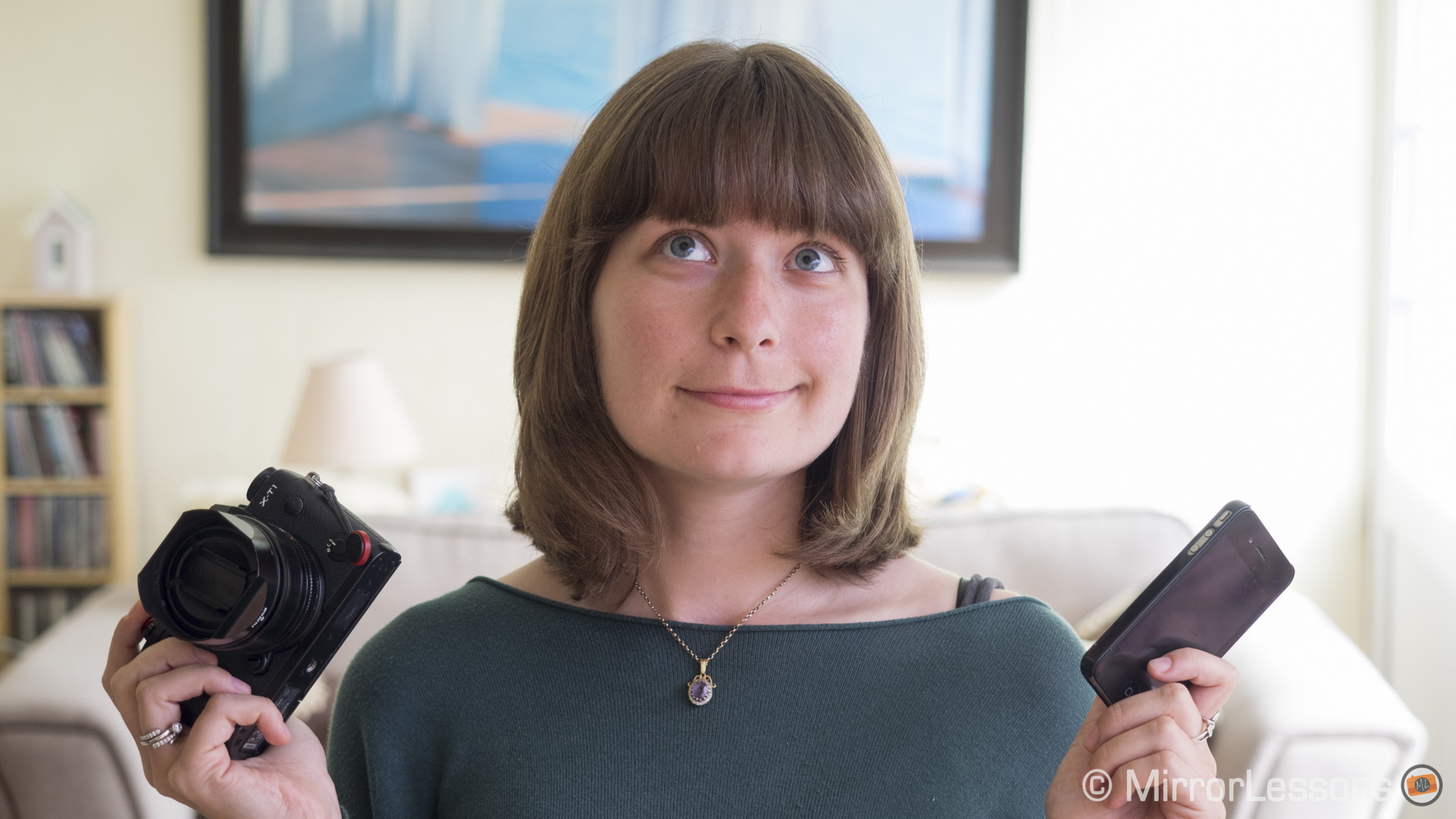In an age when improvements to digital imaging happen in giant leaps and bounds, it has become harder than ever for those interested in photography to decide on the proper tool for their needs. No longer can we say that you need a proper digital camera to take decent photographs. Just one look at an image taken with a Samsung Galaxy S6 or iPhone 6 is evidence enough of that.
In fact, technology is evolving so quickly that even the very title of this article wouldn’t have been relevant just a few years ago. Mirrorless cameras vs. smartphones? More like DSLRs vs. point and shoots. And while DSLRs are still an important reference for professionals, few would argue that the low-end point and shoot is headed down the fast path to extinction, with the only exceptions being premium compact cameras (large sensor, top performance) and models with specific functions such as waterproof cameras.
Although the title has changed, the core argument we’re facing actually isn’t so different. Mirrorless cameras, like DSLRs, are tools for more serious photographers – those who want excellent image quality and performance, as well as advanced control over the image making process.
Smartphone and point and shoot users, on the other hand, are generally less demanding. For them, it’s more about capturing a snapshot of the moment, and the more straightforward the tool, the better. As for their artistic needs, they can satisfy them with countless apps that provide filters and vintage effects in a matter of seconds.
Of course, this isn’t to say that you won’t see an experienced photographer using a smartphone or a novice using a mirrorless camera. Indeed, you’ll frequently find people using both!
So, what are the tangible differences between mirrorless cameras and smartphone cameras? To find out, let’s look at the following points:
Image Quality
Let’s start off with the characteristic that’s most likely to interest you – image quality. Though today’s smartphones are capable of taking very good images, the average sensor size is still much smaller than a sensor you’ll find inside a mirrorless camera.
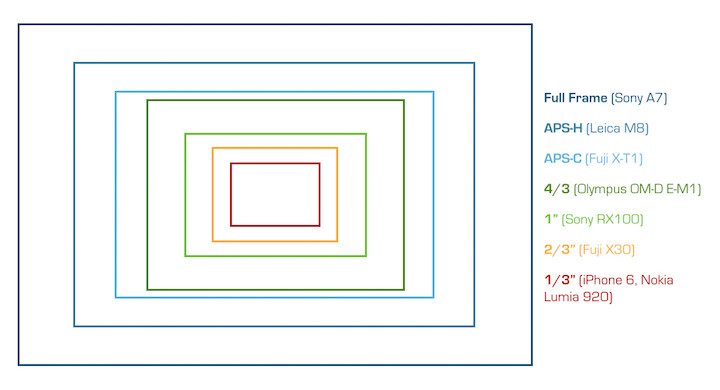
But wait, you say your smartphone boasts a high megapixel count? That’s great, but contrary to popular belief, it’s actually sensor size more than the overall megapixel count that makes a difference to image quality. This is because a larger sensor can gather more light and information. The difference becomes especially noticeable in more difficult conditions such as low light or backlit scenes.
Indeed, if image quality were a top priority, I’d much sooner choose a mirrorless camera with an APS-C sensor and 16MP such as the Fujifilm X-T10 than I would a smartphone with a 1/1.5” sensor and 41MP such as the Nokia Lumia 1020, even though the latter has a higher megapixel count. (And we mustn’t forget that larger sensors also have a slew of other advantages such as better dynamic range, superior low-light performance, and less noise.)
That said, a higher megapixel count does give you one big advantage, and that is the ability to crop. Since most smartphones use a digital zoom instead of an optical zoom, the only way to “zoom in” is to crop into the centre of the image. Having a higher resolution allows you to retain more detail and sharpness even if you crop.
[stextbox id=”text-box”]
The take-home message:
A smartphone delivers enough image quality if all you ever do is casually document your vacations, take fun snapshots with your friends and family, and share these shots online. Once you start to create more artistic shots, specialise in a niche, or work in more challenging conditions such as low-light, you may find yourself desiring something more.
[/stextbox]
Mirrorless – 1 / Smartphone – 0
Size and Convenience
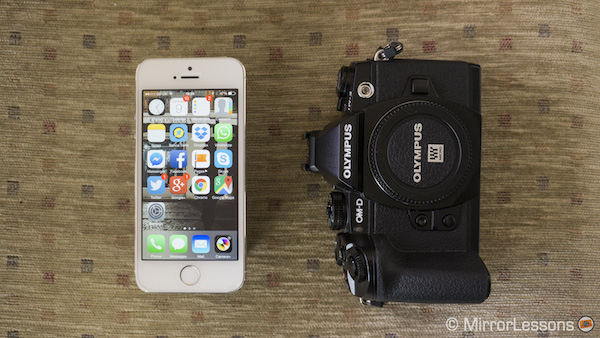
These two points go hand-in-hand. Though mirrorless cameras are small, they aren’t as flat as smartphones, which can easily be stored inside bags and even a jean pocket. It is as natural to carry a smartphone around as, say, your wallet or house keys because it serves many purposes beyond just photography, such as texting, calling, emailing, and surfing the web. The only time we don’t have them on us is when we forget them, which in this age, is akin to forgetting to put on a pair of trousers.
Not so with mirrorless cameras, or any digital camera for that matter. To always carry around a camera is to have the deliberate intention to shoot. You are consciously saying to yourself, “I might come across an interesting photographic opportunity and I’d better be ready.” You cope with the extra weight and bulk in the interest of creating beautiful imagery.
[stextbox id=”text-box”]
The take-home message:
If the idea of carrying around extra bulk or weight bothers you, you might be better off sticking with your smartphone.
[/stextbox]
Mirrorless – 0 / Smartphone – 1
Speed and Performance

Speed is an area where mirrorless cameras have a big advantage over smartphones. They have a faster and more accurate autofocus system, a better buffer, faster continuous burst speeds, and tracking capabilities. Not only, but the overall operation speed also tends to be faster. It takes a matter of seconds to power on a mirrorless camera, focus, and take a shot.
Smartphones, on the other hand, are better suited to static subjects. They simply don’t have an autofocus or tracking system capable of keeping up with and predicting extremely quick and unexpected movements, though many have a fairly fast continuous shooting speed. It also takes more time to turn on a phone, activate the camera app and set up the shot (though more recent models are becoming increasingly faster).
It should also be mentioned that mirrorless cameras can be used with telephoto lenses that are designed specifically for genres like sports and wildlife. These lenses, thanks to their quick and efficient autofocus mechanism, make it easier to lock onto and track fast-moving subjects.
[stextbox id=”text-box”]
The take-home message:
If you shoot a lot of action, be it as ordinary as your kids running around or something more complex such as sports or wildlife, drop the smartphone and go for the camera.
[/stextbox]
Mirrorless – 1 / Smartphone – 0
Lenses
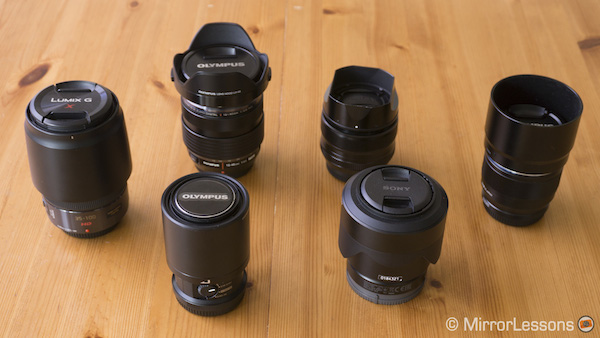
Coming back to the topic of lenses, here we have another area where mirrorless cameras reign supreme. If you purchase a MILC (mirrorless interchangeable lens camera), you have the option of changing lenses according to your subject matter. For example, you might choose a wide-angle lens for landscape work, whereas you’d opt for a telephoto zoom for sports or wildlife as suggested in the previous section.
With lenses that have a fast aperture (at least f/2.8), you can also achieve a very shallow depth of field. This means having an in-focus subject against a blurry background. Shallow depth of field is important to photographers because it allows them to separate their subjects from the elements around them.
With smartphones, you don’t have the liberty of being able to change lenses, nor can you achieve a very shallow depth of field because the sensor is too small and the built-in lens generally isn’t fast enough. A select few have an optical zoom such as the Samsung Galaxy K Zoom but the vast majority have a limited digital zoom that crops a portion of the image and enlarges it back to size, causing a loss in resolution and quality.
You can buy small detachable lenses for smartphones, including macro, telephoto, wide-angle and fisheye glass, but none match the quality of a mirrorless lens.
[stextbox id=”text-box”]
The take-home message:
If you find yourself wanting to experiment with different lenses and focal lengths, or if you become very interested in a genre that requires a specific lens, it may be a sign that you are ready to take a step up from basic point-and-shoot photography.
[/stextbox]
Mirrorless – 1 / Smartphone – 0
Manual control
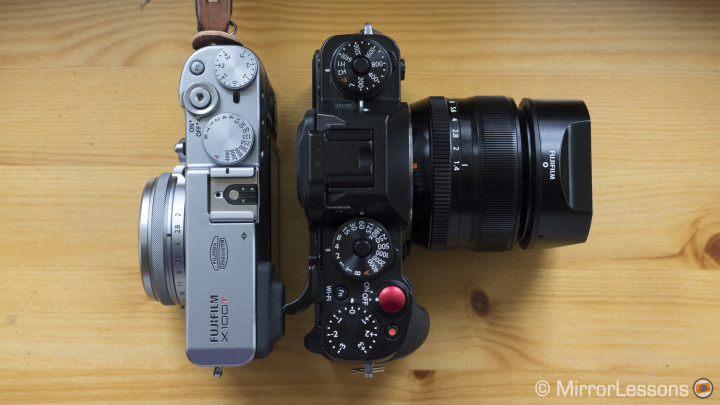
Wanting more control over the image making process is a sure sign that it is time for you to take your photography to a new level. With a mirrorless camera, you can make precise adjustments to shutter speed, aperture, ISO value, focus, exposure, white balance, and more either from the menu or by using external dials and buttons. You also have the option of shooting in Raw in addition to JPG format, making it possible to tweak your image in post-processing programs like Lightroom or Photoshop.
It is possible to make manual adjustments on most smartphones as well thanks to ever-improving camera software and dedicated apps, but your control is more limited, especially in terms of aperture adjustment. There are a few phones which offer Raw capture, such as the Lumia 1020, HTC One M9 and Panasonic Lumix CM1, but they are still few and far between.
[stextbox id=”text-box”]
The take-home message:
Manual control is a topic that generally interests serious photographers who are out to create images with a very specific look and feel. If you want complete control over how your image turns out, a mirrorless camera is the perfect tool to learn on.
[/stextbox]
Mirrorless – 1 / Smartphone – 0
Video
Mirrorless cameras are currently on the cutting edge of video technology, with companies like Panasonic, Samsung and Sony at the vanguard of the movement. Camera bodies are smaller than ever before and the technology they house is exciting: 4K video, 4K Photo, and slow motion capabilities are a few that spring to mind. But it’s not just a question of video format. Many of these cameras, such as the Panasonic GH3/GH4 or Sony A7s, now give you high-end/pro video settings that used to only be available on expensive camcorders. In fact, they are often used in the professional audiovisual sector.
Even in the case of smartphones, there isn’t much lacking in terms of specs. It is becoming increasingly common to see smartphones with 4K video (Samsung Galaxy S6, Panasonic CM1) and slow motion capabilities like the recent iPhone 6 (240fps in Full HD). However, as impressive as these specs may seem for a smartphone, many of the same arguments apply: a smaller sensor will give you less quality and less shallow depth of field, you don’t have the advantage of interchangeable lenses, and you have less manual control.
[stextbox id=”text-box”]
The take-home message:
If you take a video on a smartphone, it is generally to capture the moment. For more advanced filming, you’ll want to go with a mirrorless camera with excellent video capabilities.
[/stextbox]
Mirrorless – 1 / Smartphone – 0
Battery Life
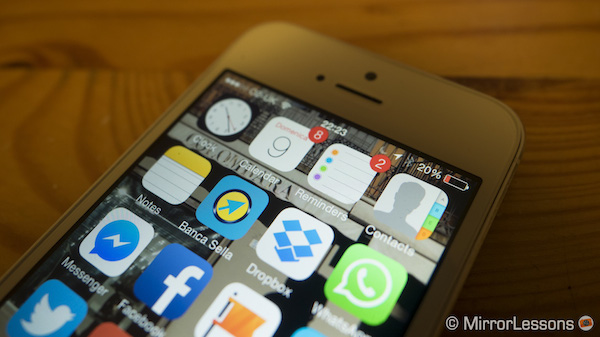
Due to the presence of power-hungry LCD/OLED screens, wireless connectivity, advanced shooting functions such as burst shooting or video, and powerful apps, neither mirrorless cameras nor smartphones have an astounding battery life. The best battery we’ve ever used on a mirrorless camera is that of the Lumix GH3, which lasts a day of intensive use.
The biggest issue with smartphones is that we use them for other things besides photography, so it is more likely that we’ll end up with a dead battery halfway through the day than with a digital camera.
The best workaround is an external charger like the Anker Mini. It has enough juice to fully charge an iPhone 1.5 times over, and can also be used to charge mirrorless cameras that have a USB charger. For any other mirrorless camera, it is wise to carry around at least one extra battery. (For more on this topic, you can read our complete article about mirrorless cameras and battery life.)
[stextbox id=”text-box”]
The take-home message:
Today’s technology will chew through a battery in no time at all, so don’t let this be a deciding factor. Just bite the bullet and buy those chargers and extra batteries!
[/stextbox]
Mirrorless – 1 / Smartphone – 0
Complexity
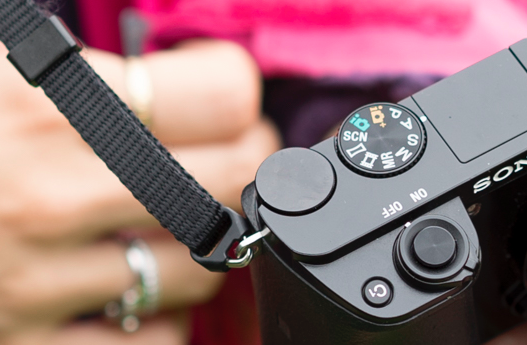
Though most mirrorless cameras offer some sort of automatic mode, which can usually be accessed from the mode dial or a dedicated button, there is a steep learning curve if you want to become familiar with all the functions your camera has to offer.
Smartphones, by comparison, are far more straightforward, not only because the image making process tends to be automated but also because we use smartphones on a daily basis for other purposes such as texting, making calls, and browsing the web. It is a tool we already know inside and out because we use it so often.
The complexity issue also applies to the final destination of the majority of our images – usually a social network, photo storage service or hard drive. With mirrorless cameras, you have to either physically transfer your photos from a memory card to a computer or wirelessly transfer them to a smart device. (One exception to this rule is the Samsung NX line-up, whose latest mirrorless cameras can upload images directly to social networks and photo storage services.)
In the case of smartphones, the very tool we use to store and upload photos is also the one we use to take them. That extra step of transferring your images has been removed.
[stextbox id=”text-box”]
The take-home message:
Smartphones are less complex, not only as photographic tools but also in how they allow you to store and share images.
[/stextbox]
Mirrorless – 0 / Smartphone – 1
Price
Mirrorless cameras and smartphones are both expensive tools but there are a number of reasons the latter will probably end up costing you less in the long run.
The first, and most obvious is that most people don’t have to go out of their way to buy a smartphone for photography because they probably already own one anyway.
Second, all phone companies give you the option of amortising the cost of your smartphone in monthly instalments. It isn’t uncommon to pay off your smartphone over the duration of your contract with the company. (There are finance payment options for mirrorless cameras too but you will need to come to an agreement with your local camera store.)
Finally, though you are free to use your mirrorless camera with nothing but the kit lens, it makes little sense to buy an interchangeable lens camera if you aren’t going to experiment with different lenses in the future. The basic kit may cost just as much as a smartphone but any additional lens you buy is an extra investment.
[stextbox id=”text-box”]
The take-home message:
You can wind up paying about the same for a new smartphone as you would a mid-end mirrorless camera with the kit lens. However, extra lenses can quickly hike up the price.
[/stextbox]
Mirrorless – 0 / Smartphone – 1
Hey, what about smart lenses?
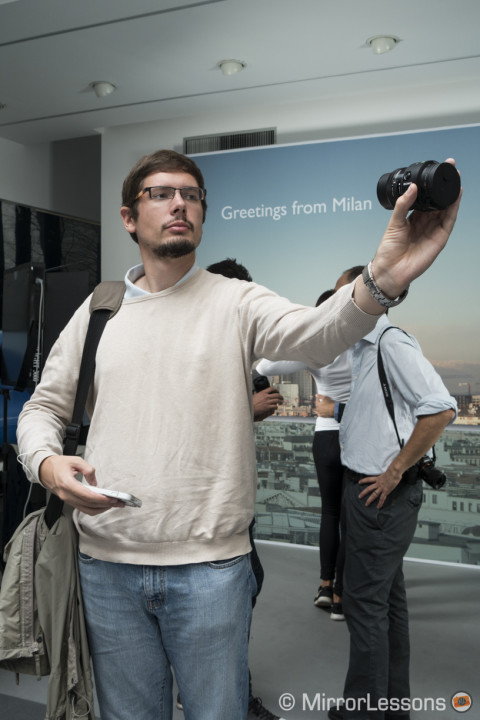
A new technology that has attempted to bridge the gap between the convenience of smartphone photography and the image quality and performance of interchangeable lens cameras is the “smart lens” or lens camera.
The smart lens houses a sensor of its own and is wirelessly controlled by your smartphone. The sensor sizes range from 1/2.3-inch to APS-C depending on the model but what they all have in common is that they are bigger than the sensor inside your smartphone.
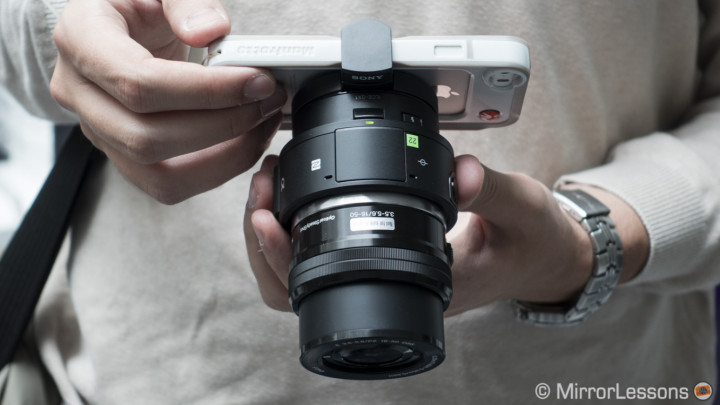
The lens can either be attached to the smartphone via a mount, or used separately. Though the smart lens stores images onto an SD card, they are also saved to your smartphone for easy uploading and sharing.
As of 2015, there are six smart lenses on the market – the QX10, QX100, QX30 and QX1 from Sony, the Air A01 from Olympus, and the DxO One. The QX10, QX100 and QX30 are all zoom lenses while the QX1 and Air A01 are adapters to which lenses can be attached. The former works with Sony E-mount lenses, whereas the latter is for Micro Four Thirds lenses. The DxO One is the most recent announcement and also the most intriguing. It attaches to the iPhone via the Lightning connector, which should provide more direct communication between the two devices.
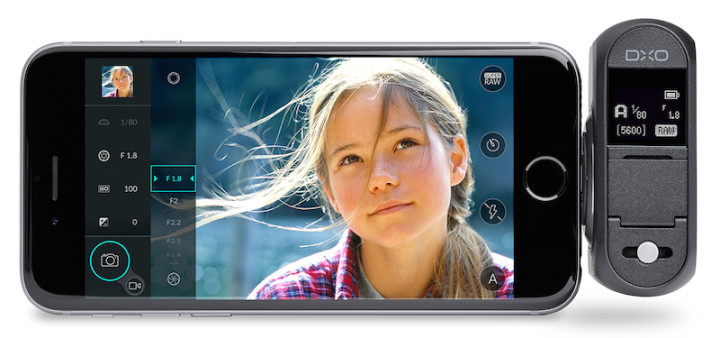
As you might expect, there are pros and cons for each model. Despite being portable and boasting the same image quality as the best high-end compacts and some mirrorless cameras, connectivity issues, bulkiness, battery life, and of course, expense continue to prevent the concept from reaching its full potential.
Personally speaking, I don’t think that smart lenses are on the path to becoming a valid alternative to smartphones or mirrorless cameras. Smartphones on their own will always be more immediate than a smart lens, and a point and shoot or mirrorless camera will always be easier and more intuitive to use.
[stextbox id=”text-box”]
The take-home message:
The smart lens is the kind of technology that falls into the category of “cool gadgets to play with but not necessarily to own.”
[/stextbox]
And the mirrorless camera vs. point and shoot debate?
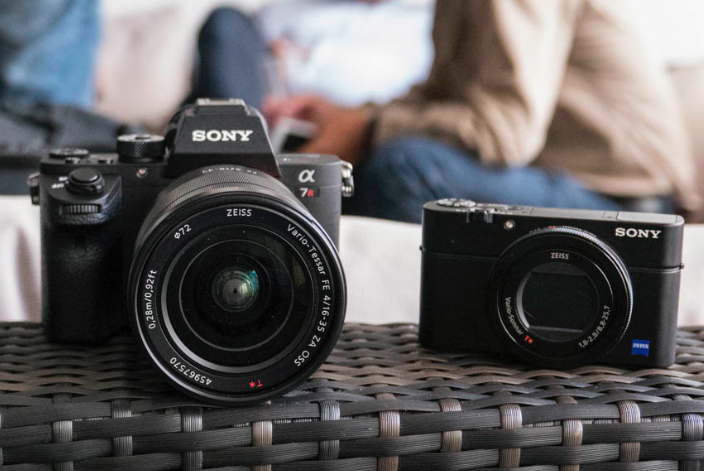
The mirrorless camera vs. point and shoot debate is alive and well, though in this case, we’re not talking about low-end point and shoots but rather high-end pocketable compacts with large sensors. At this time, there are only a couple that stand out from the crowd – the award-winning Sony RX100 series and the Canon G7X.
These compacts are no bigger than your average point-and-shoot but pack some amazing features you’ll often only see on high-end cameras. In addition to the large 1-inch 20MP sensor, you have the advantage of a fast zoom, rapid burst shooting, and amazing movie features. For instance, the RX100 IV (the latest iteration in the RX100 series) is capable of shooting 4K video and slow motion footage up to 1000fps (check out our review here). As for the G7X, it has a vaster zoom range than the RX100 series, and while it doesn’t have a pop-up electronic viewfinder like the RX100 III and IV, it benefits from a touch interface.
Are there other options out there? Yes, but they either house a smaller sensor (such as the Fujifilm XQ2) or have a bigger body (such as the Lumix LX100).
[stextbox id=”text-box”]
The take-home message:
If you prioritise compactness and portability above all else, an RX100 series camera or G7X will certainly check all the right boxes. There are five in total, so you can let your needs and budget determine which one is best for you.
[/stextbox]
(To find out more about the RX100 series, check out our full review of the RX100 IV. It includes numerous comparisons between the RX100 IV and the previous model, as well as a few words about the I and II versions.)
Mirrorless cameras and smartphones – Can two become one?
I’ve spent a lot of words detailing the differences between mirrorless cameras and smartphones but the truth is that the two technologies are growing more and more similar as the years go by.
The sensor size of smartphones is increasing with each new model that comes out. A great example is the Panasonic Lumix CM1, the first “camera phone” to have a 1-inch sensor, a decent fixed 28mm f/2.8 lens, a shutter release button, and a physical button that allows you to switch between camera and smartphone mode. We are also seeing more and more camera apps that support manual control over exposure, many of which can be used in conjunction with innovative products like the smart lenses discussed above.
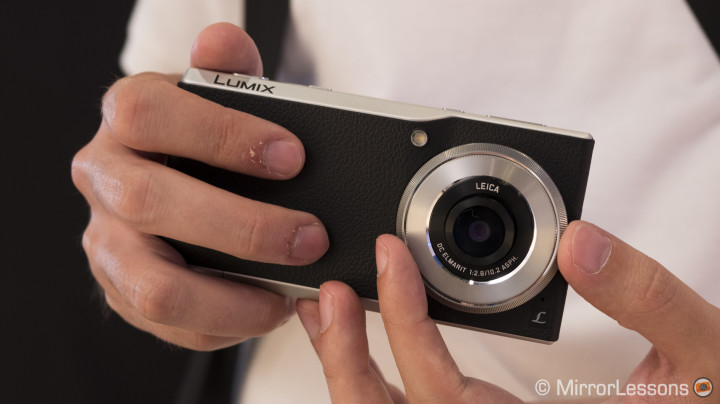
Mirrorless cameras, too, are taking on smartphone-esque characteristics. Though we’ve yet to make a phone call or text from one, most mirrorless cameras have WiFi and/or NFC connectivity, and some, such as the aforementioned Samsung NX series, even allow you to upload directly to social networks and or send images by email.
Will the two technologies merge one day? If we’re talking about high-end photographic tools, I have my doubts. Photographers simply appreciate good ergonomics, external dials, viewfinders, and other such features far too much. However, I wouldn’t be surprised if we start to see more “smart” functions incorporated into their software. For example, wouldn’t it be great if we could wirelessly upload a series of images for a client directly from our camera to a storage program like Dropbox?
As for the low-end market, future variations on camera phones like the Lumix CM1 may well begin to replace low-end mirrorless cameras and point and shoots completely, hopefully at a more accessible price and with a better battery life. It is currently the only solution that rolls compactness, portability, manual control, high image quality, good performance, calling, texting, and web surfing into one package, so let’s hope it is only the first of many more interesting products to come.
Which tool do you use for most of your photography and why? Share your thoughts below!
